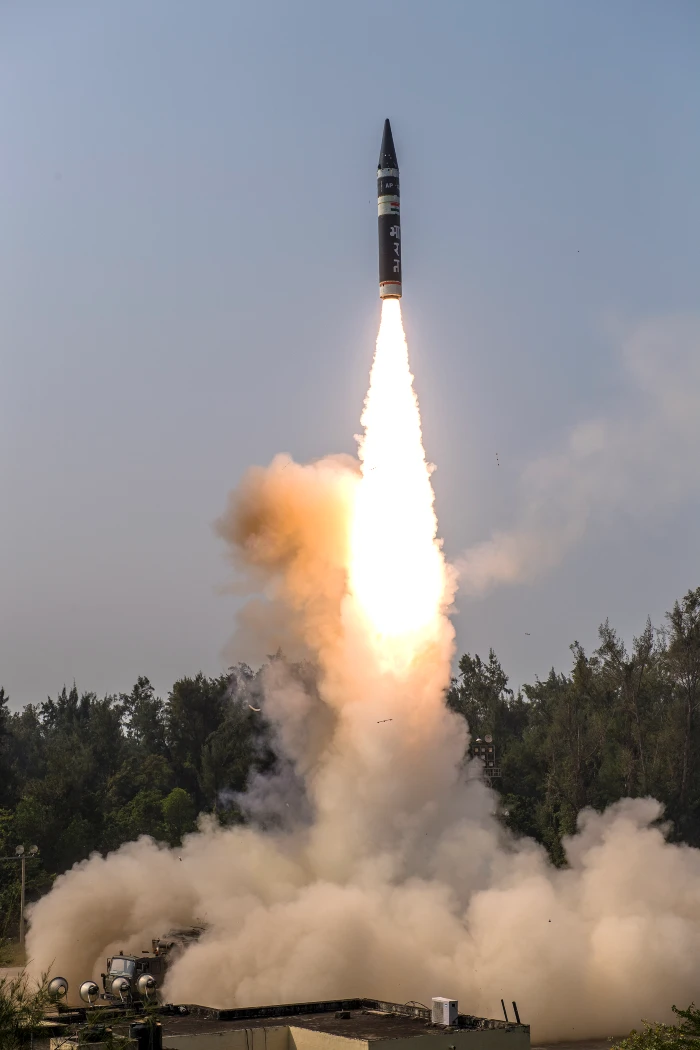India on Saturday test fired 'Agni Prime' nuclear missile, further consolidating the country's nuclear deterrence.
Various telemetry, radar, electro-optical stations and down range ships positioned along the eastern coast tracked and monitored the missile trajectory and parameters after the ballistic missile’s launch at 11.06 A.M.
The Ministry of Defence said that the missile followed textbook trajectory meeting all mission objectives with high level of accuracy.
New generation ballistic missile ‘Agni P’ successfully test-fired by DRDO from Dr APJ Abdul Kalam Island. #AmritMahotsav #IconicWeek https://t.co/7ex3kBczCL pic.twitter.com/FI8yC4Z1K6
— DRDO (@DRDO_India) December 18, 2021
The 'Agni P' is a two-stage canisterised solid propellant ballistic missile with an advanced navigation and guidance system. The weapon’s canisters can be mounted on the chassis of a truck or fired from a rail platform, making the weapon highly mobile.
The missile is much lighter compared to the Agni-3 ballistic missile, making it easier to transport the weapon across the country. The Agni-P can strike at a distance of 1000-2000 km. It can be used to destroy armadas in the Indo-Pacific, making it ideal to deter misadventure by China.
Defence Minister Rajnath Singh congratulated DRDO for the successful flight test.
India had last week also successfully tested the Pinaka Extended Range Multi Barrel Rocket Launcher System (Pinaka-ER), Area Denial Munitions (ADM) and indigenously developed fuses at Pokhran.
The upgraded Pinaka-ER can strike at a range of 45 kilometres, enhancing its ability to stop tanks and other mechanised columns in their tracks.
Also Read: India successfully tests Extended Range Pinaka rocket at Pokhran




















